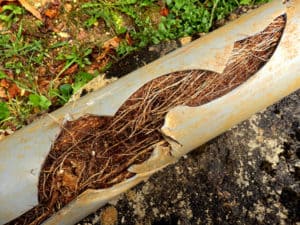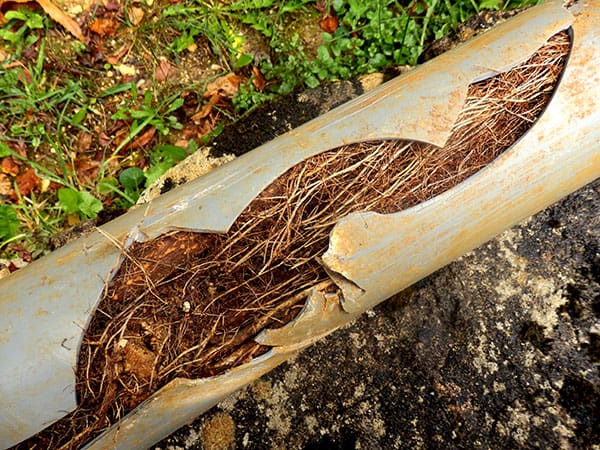The heatwave being experienced across Britain during summer 2018 may lead to an autumn and winter of increased tree root infestation problems in drainage pipes.
Prolonged periods of dry weather can cause significant soil cracking and ground movement, which can increase the risk of displacement and cracking drainage pipes.
This, in turn, gives tree roots, which are also searching for scarce water supplies during drought conditions, better access to drain pipes, increasing the chance that roots take hold and contribute to serous blockages.
The probability that climate change will make this process more common is one of the topics in a new UKDN Waterflow (LG) White Paper: Trees – Getting To The Root Of The Issue.
UKDN Waterflow (LG) Ltd Director Richard Leigh, who is the White Paper’s author, said: “Trees are a much-appreciated part of our landscape. Their presence is often associated with sustainable development and a healthy environment.
“But trees can cause problems, as the heightened risks associated with drainage systems and drought indicate.
“Our White Paper presents latest research on how trees interact with drainage systems, dispelling some long-standing myths, and explaining what property owners and managers can do about issues raised.”
Tree roots – impact on drainage systems
Around 4 per cent of all drainage investigation and repair jobs UKDN Waterflow (LG) is called out to involved tree root infestation of pipes.
Once tree roots have gained entry into pipes they can have a significant impact on its water carrying efficiency.
They can build up significant density in long lengths of pipe, then during heavy rain water backs up and causes flooding. Roots also combine with other materials, such as fats, oils, and grease, sanitary products, and wet wipes to make sewage and pipe blockages worse.
Clay pipes as particularly prone to root ingress, due to gaps in the joints between each section of pipe.
However, modern plastic pipe systems are also affected, and there is research that indicates rubber seals that connect plastic piping are prone to failure under pressure from tree roots.
Future risks – drought and climate change
In the White Paper, Richard Leigh warns that there is a growing need to factor in climate change to tree and drainage management.
In California, USA, efforts to conserve water during droughts have had unforeseen consequences.
Ground movement caused by soil shrinkage has increased pipe damage, increasing the risk of tree root infiltration. As consumers have responded to calls to save water, lower water flows have led to more pipe blockages.
Richard Leigh said: “In the UK, more volatile weather and increased tree root infiltration could combine to increase sewer flooding risks. Changing weather patterns are already encouraging the planting of more exotic tree species.”
In countries like Australia, species include fig trees, rubber plants, camphor laurel, and large gum trees. All are considered to pose an extreme or very high risk of sewer pipe infiltration.
Overcoming tree-related drainage problems
The best way to guard against tree root ingress is to put in place a rigorous planned and preventative maintenance (PPM) programme.
This will identify pipes that are most at risk and catch tree root ingress at an early stage. Key elements of a PPM include:
- Review tree planting plans and avoid species that have particularly vigorous root systems, such as willow, plane, poplar, and maple.
- Carrying our regular CCTV drainage surveys to check for defects and signs of root ingress
- Mapping drainage systems to support effective SuDS planning and tree planting
- Keeping pipes clean through water jetting, to prevent a build-up of silt and other nutrients, and water pooling, that can encourage root growth
- Removing tree roots with the most appropriate, cost-effective no-dig method. This may involve high pressure water jetting, electro-mechanical cutting, or robotic cutting.
Pipes that are most at risk of tree root infiltration can also be protected by the installation of a glass reinforced plastic liner, creating a strong barrier to roots.
Richard Leigh said: “It is essential to seek the right expert advice about the potential impact of trees on underground assets. There is considerable misunderstanding on the topic. A practical response based on facts will protect assets and reduce costs into the future.”
For more information, about root ingress and the impacts that tree roots can have on our drainage systems please download a copy of our white paper document, Drain maintenance: getting to the root of the issue.
Click here to see our ‘getting to the root’ infographic.


